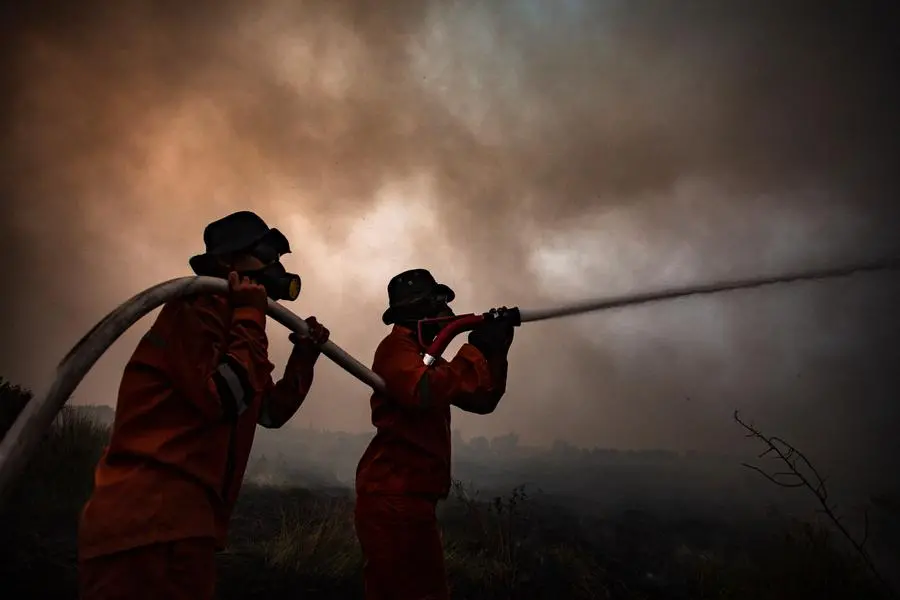PHOTO
Air quality in parts of Singapore hit unhealthy levels on Saturday as winds brought haze from Indonesian forest fires to the city-state, its environment agency said.
A prolonged dry season has led to a higher risk of wildfires on Indonesia's major islands, stoking fears of a repeat of the smoke-belching blazes that have affected air quality in neighbouring Malaysia and Singapore in recent years.
Singapore's National Environment Agency said the pollutant standards index (PSI) breached the unhealthy level of 100 on Saturday, hitting 111 in an eastern suburb and 102 in the island's centre before midday.
At PSI levels between 100 and 200, residents are advised to "reduce prolonged strenuous outdoor physical exertion", according to NEA guidelines.
However, people were still seen jogging and cycling in one park in the city's east.
The agency said late Friday that the number of fire "hotspots" on the nearby Indonesian island of Sumatra had surged to 212, up from 65 on Thursday and 15 Wednesday.
"Smoke plumes and haze were observed from satellite imagery over southern and central Sumatra. A brief shift in the wind direction... blew some of the lighter haze toward Singapore and caused a deterioration in air quality," it added.
Malaysia has also been affected, with the country's top environment official last week blaming Indonesian forest fires for the haze.
The Indonesian environment minister, however, has denied any transboundary haze.
The Indonesian fires take place every year during the dry season but this is the first time since September 2019 that they have caused the PSI to reach unhealthy levels in Singapore.
Fires in 2015 were among the deadliest on record, cloaking Southeast Asia in toxic smoke for weeks.
That year, Singapore's PSI crossed the 300 threshold into a level deemed "hazardous".





















